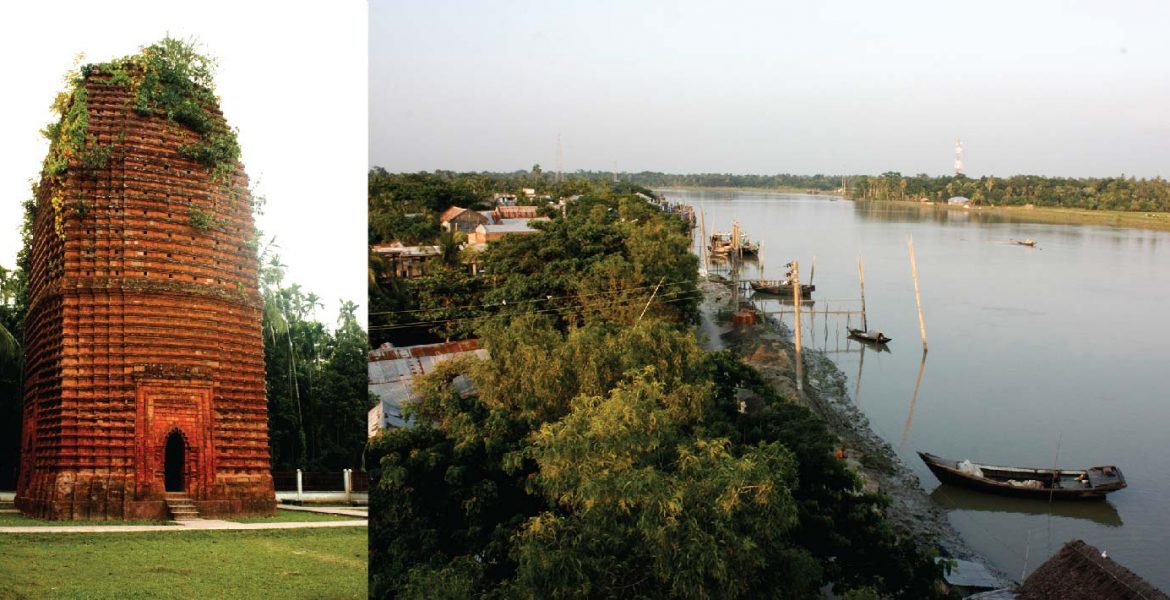
In a not-so-far off land, once upon a time, a Turkish General arrived with a few of his trusted followers. Legend say that the land was hostile and inhabitable, shrouded in deep mangrove forests, containing only wild beasts and a few antagonistic inhabitants. This brave visionary General, Ulugh Khan Jahan, however was not deterred by such obstacles; he instead, began to build that the history of this region would remember forever as a city famed for its impressive infrastructure and stunning mosques. Even though this city did not survive its battle against time, luckily for us, the very best of this city’s jewels refused to give in. The city in conversation here is none other than the Mosque City of Bagerhat in Bangladesh, enlisted by UNESCO as a World Heritage Site in 1983. The Mosque City of Bagerhat, part of present-day Khulna division, lies in the southern region of Bangladesh. Bagerhat is situated fifteen miles south-east of Khulna, a journey of approximately seven hours from Dhaka across the Mawa Ferry Port. If the Sundarbans can be called the natural jewel of the south, Bagerhat can be titled its historical equivalent. Originally known as Khalifatabad, the city was established in the 15th century by the sufi-warrior saint Ulugh Khan Jahan who also played a key role in spreading Islam in the region. Bagerhat was once famed as the “mint town of the Bengal Sultanate ” and yet, at present, unfortunately, it is the most ignored of the three UNESCO enlisted sites in Bangladesh. Dotted all over this city today are about fifty Islamic monuments, the majority of which is unfortunately in ruins beyond recognition. Fortunately for us, the most prominent one of them, that is the famous “Shait Gambooj Mosque” or the “Sixty Domed Mosque” survived. While this beautifully proportioned Tughluq-styled mosque will charm any visitor, brace yourself as its interiors today might disappoint you, the fault of which lies completely on poor approach to restoration by the respective authorities. Sixty slender grey stone columns that once adorned the interiors are now covered with white plaster, grotesquely thickening the columns and distorting the proportion. As if to add insult to injury, only one of the columns has been left in its original grey stoned appearance, reminding us what we might have lost to our ignorance can never be retrieved. Interestingly, although the name implies that there are sixty domes, there are actually sixty columns and seventy-seven domes, suggesting that the naming might have been based on the columns! Alongside the Shait Gambooj Mosque, noteworthy to visit amongst many others are the Nine-Domed Mosque, the Mausoleum of Khan Jahan, Shingair Mosque and the Ronvijoypur Mosque with the largest brick-domed structure in the country. An hour away is the ‘Kothlar Modh’, a Hindu-religious structure and locally well-known as a tourist attraction.


If history and architecture is not enough for you insatiable travellers, Bagerhat is no less in terms of natural beauty. A ride along Bagerhat’s prime river, the Bhairab, reveals to travellers on either shores, blinding lushness as if painted green by an over-enthusiastic child. Bagerhat possesses a laid-back atmosphere with its key attractions placed at close proximity to each other. The city is experienced on a whole new perspective when travellers choose to stroll down its primary road along the Bhairab River, pausing occasionally for an idle chat over a cup of tea with the locals. One might even learn a thing or two about life and our resilience as a nation, especially of the people in the south, as they will astonish you with their brave stories of how they battle everyday with the south’s high salinity, floods, and the slow destruction of the Sundarbans that leave them the most vulnerable. Their smugness with life is almost contagious, even when they share how they survived the deadly cyclones like the AILA (2009) and SIDR (2007). If you are looking for greater adventures beyond the historical delights and tales of the southern struggles, a visit to the ‘dighi’ (large man-made lake) adjoining the Mausoleum of Khan Jahan is highly recommended. This dighi is the home of ‘Dhola Mia’ and ‘Kala Mia’ (names locally debated!), two senile, lethargic crocodiles, of which one is partially blinded. Local superstitions suggest that sacrificing a chicken to feed the crocodiles will earn one’s blessings! These ‘celebrity crocodiles’ even have two dedicated care-takers attending to their daily needs. However, most of the sacrificing stories today are scams to make visitors purchase the sacrificial chicken at exorbitant prices. But be warned! Do not take the Mia-duos sluggishness for granted as there have been incidents of attacks by the crocodiles. Bagerhat was enlisted by Forbes in 2011 as one of the “Fifteen Lost Cities of the World” alongside awe-inspiring sites such as Machu Pichu, Pompeii and Angkor Wat amongst others. One would truly miss out if he doesn’t lay eyes on this city and experience the splendours that truly honours its appellation “The Mosque City of Bagerhat”.


